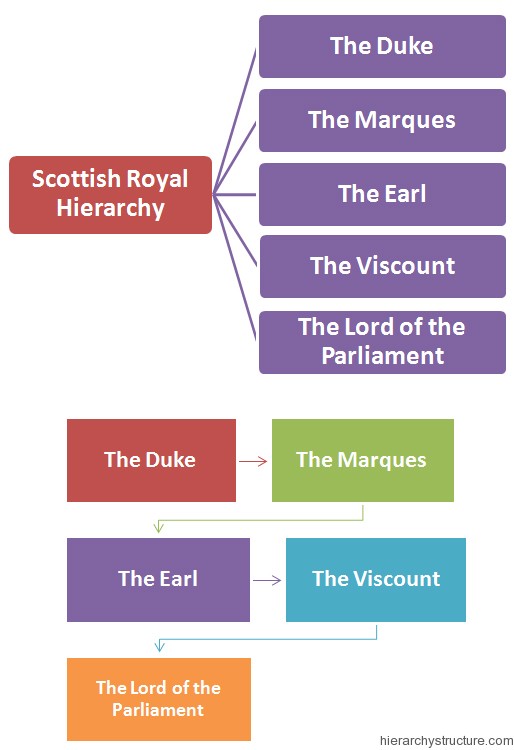Scottish royal hierarchy demonstrates the royal class in Scotland. This royal class was considered royal and pure blood in ancient times and they usually resided on the upper (top) level of the pyramid of society. The members of this royal class possessed all the power of the Scotland kingdom and were bound to perform important and intellectual duties which other people, who did not possess pure royal blood, were not allowed to do. The royal work include work like ruling the kingdom, leading the wars, taking appropriate decisions for the people handling artistic, literature and philosophical area etc., were under their responsibility.
The royal family members were prohibited to waste their important and precious time on non-intellectual and less important works like crafting, trading including agriculture. They granted their land to the lower class and in return, the lower class provided them their services. The Scottish royal hierarchy is described below in this article in the ladder format of starting with the highest rank of the hierarchy and then proceeding forward in a descending mode.

- The Duke
- The Marques
- The Earl
- The Viscount
- The Lord of the Parliament
The Duke
The duke was the supreme power and possessed extreme power and rights in the kingdom. He was always a royal blood. He was considered owner of all of the land in his kingdom. He would further give that land to his friends and relatives who were also royal blood. The title duke later on was transformed to the title monarch. So far, this is the highest rank in the Scottish royal hierarchy.
The Marques
The Marques was a nobleman of hereditary rank in Scottish royal hierarchy and the most trustable & closest to the duke. Most of the times the Marques rank were designated to a member of the royal family. This class was also very well respected class of the Scottish royal hierarchy.
The Earl
The earl is a member of the nobility and most of the times true royal blood, being a member of the royal family. The oldest earldoms in Scotland royal hierarchy are believed to hail and originated from mormaer and later through analogy, earldom got developed.
The Viscount
The viscount title was used for a male and viscountess for a female. The rank was subordinate to the rank earl but prior to the lord of the Parliament. The viscount was not necessary to be a royal blood. For example in 1620 the viscount of Falkland was created for Sir Henry Cary, although he was from English background and didn’t hail from Scotland.
The Lord of the Parliament
The lord of the Parliament was the lowest rank of Scottish royal hierarchy automatically entitled to attend sessions of the pre-Union Parliament of Scotland. Post-Union, he is a member of the lowest rank of the Scottish royal hierarchy. This rank lies below the rank viscount.
